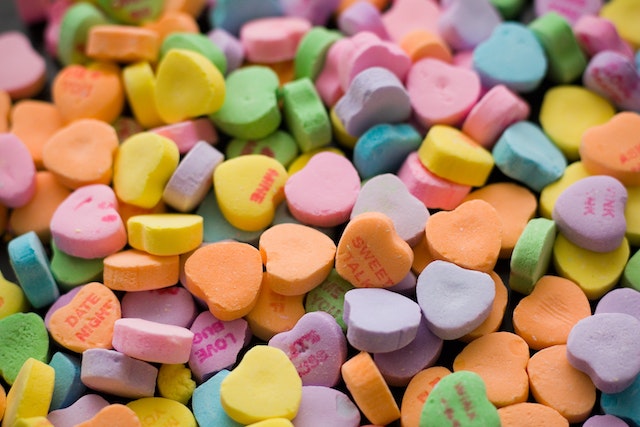
When you returned home from a long night of trick-or-treating, how did it feel to take off your cowboy boots or superhero cape, throw your haul on the bed, and rummage through it? Childhood was at its finest when you would sort an old fashion candy with excitement.
The world of sweets has seen several changes throughout the years, evolving to match current preferences and trends, much like the movies, fashion, and automobile industries.
So let’s tour the best old-fashioned candies to find out what everyone has used to enjoy throughout the years.
The 1950s
1954 featured contentious candies, and Marshmallow Peeps were added to the repertoire of vintage candies.
Since then, Peeps, which resemble Easter chickens, have caused excitement among candy enthusiasts. Candy necklaces were first created in 1958 and quickly became a favorite among Halloween and partygoers, especially young girls of the time. These candies were as famous as hot coffee today.
The 1940s
M&M Mars first released plain M&Ms in 1941. These little chocolate beans, advertised for not melting in your hands, were created to offset the summertime decline in sales.
Another candy that is to blame if any of your nostalgic candy-loving friends have ever mentioned having bubblegum cigars at baby showers is El Bubble. In 1949, this bubblegum was originally released and sold only for 5 cents.
The 1930s
M&M Mars released the Snickers bar, marking the start of the decade in 1930. The Snickers bar, which bears the name of the family’s cherished horse, is still among the most popular candy bars ever made.
Only one year later, in 1931, Tootsie Roll Pops were released. Because they combine two different types of candy into one, i.e., hard candy coating with a chewy center, they are regarded as among the earliest novelty sweets.
The 1920s
For chocolate and peanut butter fans, 1922 was a landmark year since H. B. Reese developed the Reese’s Peanut Butter Cup in this period.
The Akron Sweets Company also released DumDums Lollipops in 1924, which still is a major favorite among bank tellers and fans of retro candy worldwide.
The 1910s
This was the decade when Ethel and Frank Mars established their confectionery business in Tacoma, Washington, in 1911. Subsequently, this business would change its name to Mars, Inc., which became one of the world’s biggest privately-owned confectionery firms.
Whitman’s Sampler Box debuted in 1912 as well. This is considered the first box of chocolates with a guide to help customers decide which chocolate treat they want to enjoy.
In 1916, George DeMet popularized the chocolate turtle, a cluster of almonds and caramel wrapped in chocolate that looked like a small turtle.
The 1900s
The 1900s was a significant decade for American chocolate. The beginning of this period marked the debut of Milton Hershey’s iteration of the chocolate bar in 1900, later known as Hershey’s.
This was to cater to a huge audience since Americans consume 50 percent more chocolate than any other type of sweet each year. New England Candy Company (NECCO) Candy Wafers, a classic candied emblem, emerged in 1901.
Moreover, Emil J. Brach, the founder of Brach’s confectionery, invested USD 1000 to launch Brach’s Palace of Sweets in 1904.
Available Options
Along with most of the delicacies mentioned earlier still popular worldwide, such as Mars, Snickers, M&Ms, Marshmallow Peeps, etc., several other old candies can still be found today.
Some of these are as follows:
- Good & Plenty
Good & Plenty is considered to be the oldest candy in the USA. The chewy pink & white licorice was created for the first time in Philadelphia in 1893. It is still available everywhere at concession stores.
- Goo Goo Clusters
Goo Goo Clusters was produced with caramel, marshmallow nougat, and roasted peanuts coated with milk chocolate. Since 1912, the candy has been made in Nashville and was the pioneering multi-ingredient candy bar.
- Lemonhead
The Ferrara Candy Company has been producing these lemon-flavored pieces since 1962. Lemonheads have a firm candy core and a soft sour exterior, making them unique worldwide.
- PEZ
The compact size and brick shape of PEZ candy or the collectible dispensers have amused kids and adults alike.
The candy arrived in Vienna, Austria, in 1927, with peppermint as the only flavor available.
Final Words:
These are just a few iconic candies created throughout the first half of the 20th century.
In succeeding decades, soft candy staples such as Starburst Fruit Chews and other more specialized favorites, including Cella’s Cherries, Zots, and Clove Gum, came into being.
Thanks to the availability of online candy stores today, it is now quite easy to find these elusive items that contributed to our childhood.
Hey welcome to my blog . I am a modern women who love to share any tips on lifestyle, health, travel. Hope you join me in this journey!

Speak Your Mind